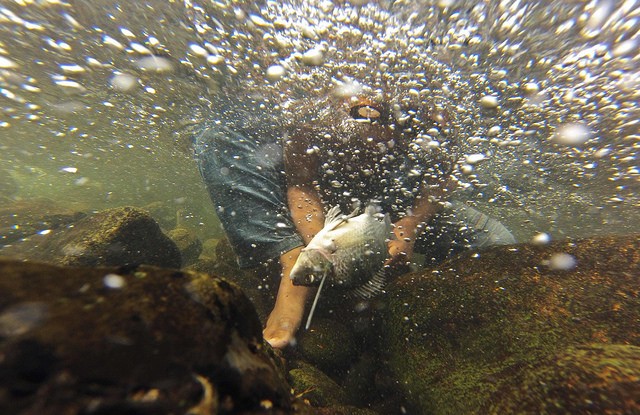
With the link between water and landscapes made explicit in the Sustainable Development Goals, it’s no wonder that water featured strongly at the 2015 Global Landscapes Forum held in Paris earlier this month.
But with such a multitude of sectors depending on water availability and quality – agriculture, health, cities, energy and manufacturing among them – experts are exploring solutions for managing the inherent trade-offs between the many users within a landscape.
“There is an increasing demand and competition for water resources, so we need to be more efficient in the way we allocate water,” Torgny Holmgren, Executive Director of the Swedish International Water Institute (SIWI), told a panel discussion on water and the landscape approach.
Ways to achieve that efficiency and mitigate water scarcity through the restoration and protection of landscapes will be both global and local, said Elisabeth Backteman, State Secretary at the Swedish Ministry for Rural Affairs.
“Solutions may be found in many places: Within the UN, other organizations, regional platforms, countries, research and private sectors initiatives but also in everyday life in landscapes around the world,” Backteman said.
POOL OF RESOURCES
The complexity of water management in a landscape becomes clear with an example from Kenya, offered by Evan Girvetz from the International Center for Tropical Agriculture (CIAT): In Kenya, a single watershed supplies 90 percent of Nairobi’s water and 70 percent of the city’s hydropower, but the small-scale farmers combined also make up a large user group of the river and its ecosystem services.
“The connection between the use of water by agriculture and also its impact on the landscape shows that the landscape approach is very important to see how these different uses of water interact,” Girvetz said.
“It’s important to design landscape interventions flexible enough to get everyone on board, but specific enough to get investors,” said Christian Dannecker, Director of Sustainable Supply Chains and Land Use at South Pole Group.
All parties to a project should come “as they are”, he said, bringing their unique capabilities and goals. For example, one partner might be able to finance the launch of the project but another will be there for the long haul.
LOCAL FLOW
Above all, however, local partners should come first, according to Maria Teresa Vargas, Executive Director of Fundacion Natura in Bolivia.
“We won’t do anything without local support,” she said, noting that 70 percent of the foundations activities are in 125 municipalities and financed by local sources, including via water bills.
“Donors won’t give money for 10 years, while local actors need to protect the ecosystem they live in,” she said, noting that local partner institutions must be trustworthy and dependable.
It's important to design landscape interventions flexible enough to get everyone on board, but specific enough to get investors.
Torgny Holmgren echoed the need for domestic finance, which, he said, could rise to meet the large and growing global greening of the capital market.
“The money is there, and that market is huge,” Holmgren said, predicting the green bond market alone could reach US$100 billion by 2020.
Decision-making also must be local, said Peter Holmgren, Director General of CIFOR, and Tui Shortland, Managing Director of Repo Consultancy, agreed: “We should be careful about the solutions that we dictate from above.”
Part of this, Shortland said, lies in the spiritual and informal daily relationship between indigenous people, water and landscapes.
“We have established community-based monitoring systems according to our values and cultural knowledge,” she said, calling also for a way to aggregate national and global reporting of those assets while respecting the diversity of indigenous languages and opinions.
UPSTREAM, DOWNSTREAM
All of which suggests that any approach for protecting water availability and quality will involve a range of tools, as noted by Anders Malmer, Director of the SLU Global Program at the Swedish University of Agricultural Sciences
“There is no general landscape solution,” he said. “There are only good tricks that can apply to different situations.”
Such “tricks” include empowering farmer institutions by giving them information that helps them boost agricultural productivity.
And amid it all, landscape approaches may be deployed, without being labeled as such, said Vargas.
“When we talk to communities, we don’t talk about ‘landscapes’, ‘adaptation’ and ‘mitigation’ because it’s too far from them,” she said.
“But when we talk ‘water’: that brings everybody from up and downstream together around the table.”
We want you to share Forests News content, which is licensed under Creative Commons Attribution-NonCommercial-ShareAlike 4.0 International (CC BY-NC-SA 4.0). This means you are free to redistribute our material for non-commercial purposes. All we ask is that you give Forests News appropriate credit and link to the original Forests News content, indicate if changes were made, and distribute your contributions under the same Creative Commons license. You must notify Forests News if you repost, reprint or reuse our materials by contacting forestsnews@cifor-icraf.org.